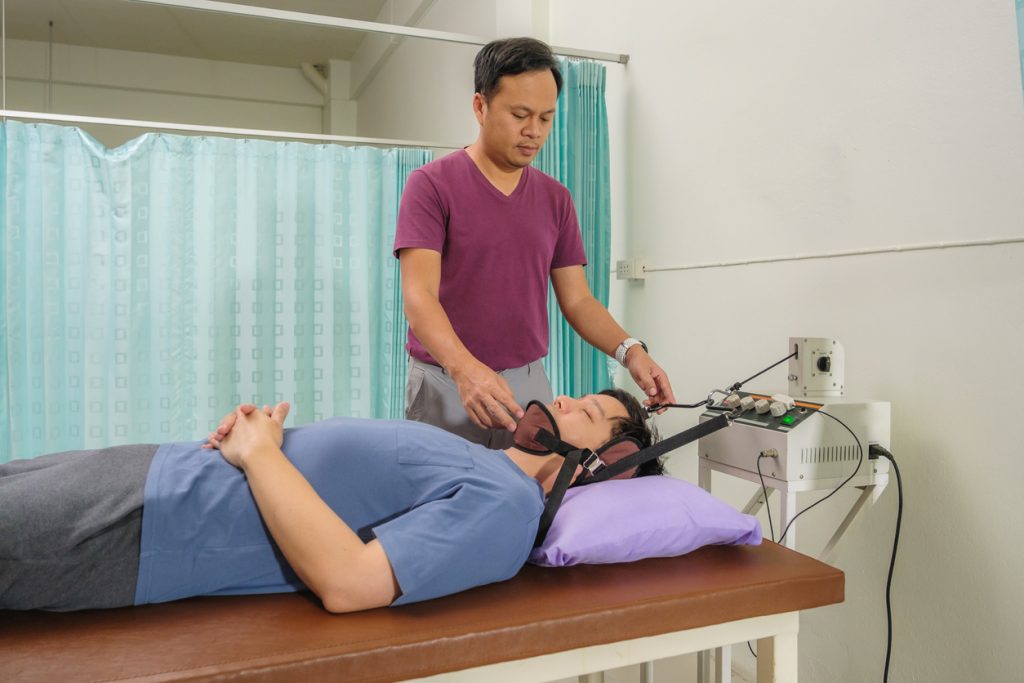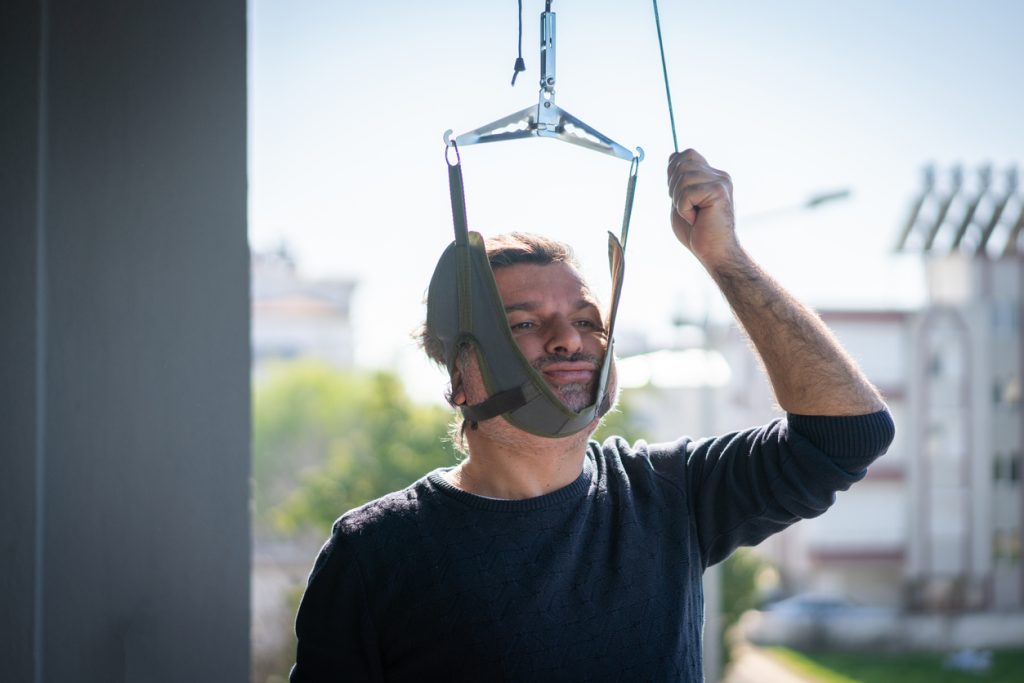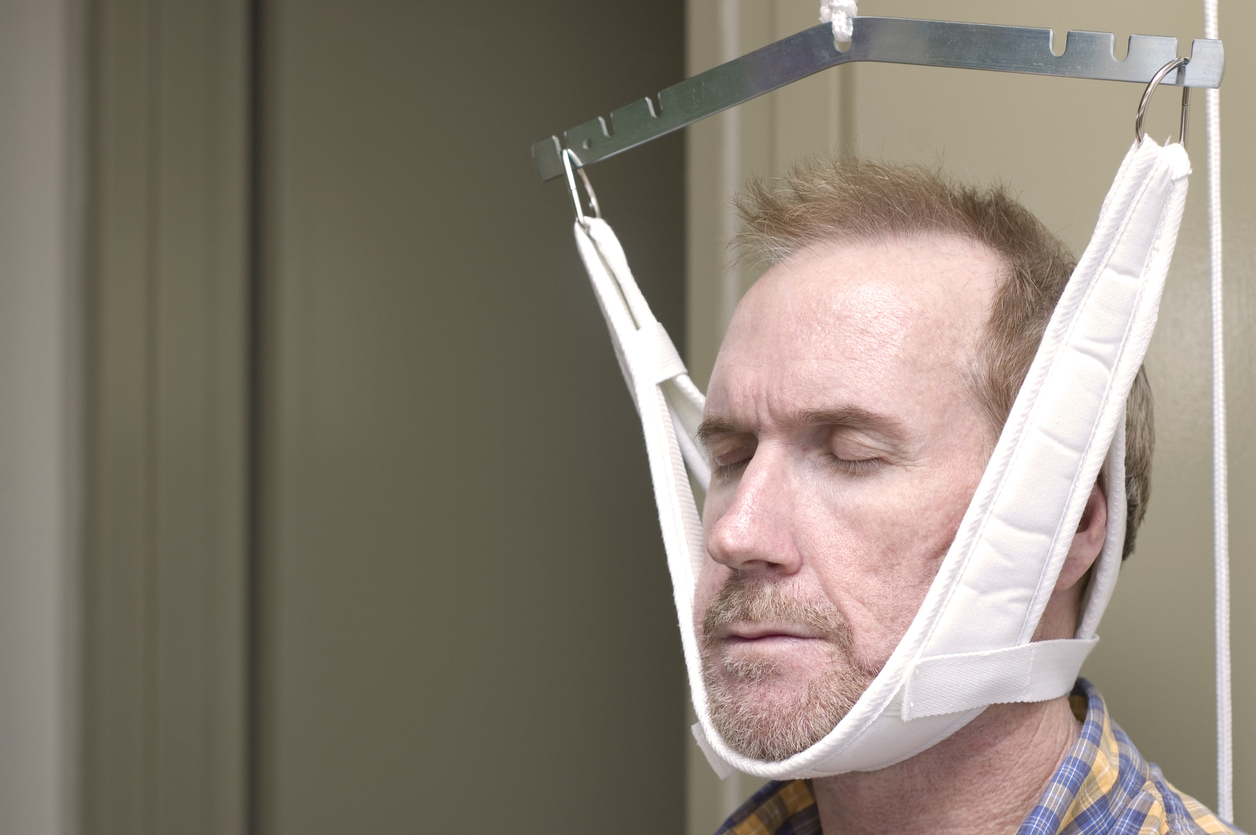Patients suffering from neck pain are often sent to physical therapy for nonsurgical treatment. Cervical traction may be recommended for these patients, along with specific exercises that can decrease pain and improve range of motion and flexibility. A 2014 study published in the Journal of Orthopaedic & Sports Physical Therapy concluded that cervical traction can be an effective treatment for some people who have neck pain.
What types of conditions can benefit from cervical traction?
Cervical traction can be used to treat several conditions that may produce neck pain. Many of these conditions become more common as people age. Others may be the result of injury or trauma to the cervical spine. The following are some conditions that may benefit from cervical traction:
- Cervical Radiculopathy – This occurs when a nerve in the neck is compressed or irritated (pinched) where it comes away from the spinal cord. The condition can cause pain that radiates into the shoulder and down the arm. Other symptoms include muscle weakness, tingling, or numbness in the hand or fingers.
- Cervical Degenerative Disc Disease – As people age, the discs can break down due to wear and tear, osteoarthritis, or an injury to the cervical spine. Discs provide a cushion between the vertebrae and act as shock absorbers. Degeneration often happens between the C5 and C6 vertebrae. Discs that degenerate may herniate and protrude into the spinal canal. This narrows the spinal canal and may compress the spinal cord.
- Spondylosis – A person with spondylosis has osteoarthritis in their neck, which can cause pain, stiffness, muscle spasms, and headaches. They may develop bone spurs, or osteophytes, that put pressure on nerves and restrict movement.
- Foraminal stenosis – This condition is a narrowing that can happen around the nerves that come out of the spine. The narrowing puts pressure on the nerves, causing pain in the affected area.
Types of Cervical Traction
There are two general types of cervical traction – manual and mechanical.
- Manual traction – Performed by a physical therapist or chiropractor with the patient lying down on their back. Slow and gradual traction force is applied to the neck and held for a few seconds. It should not be painful.

- Mechanical traction – May be performed by a physical therapist or at home. The patient typically wears a harness attached to the head and neck and hooked up to a system of weights. The traction pulls the head and neck away from the body. There are over-the-door units for use at home that utilize a weighted pulley system that goes over a door.

Atlanta Brain and Spine Care
The physicians at Atanta Brain and Spine Care often recommend physical therapy as a nonsurgical treatment for neck pain. Physical therapy helps patients build strength, flexibility, and endurance while learning proper biomechanics for spine stability and injury prevention.
Our physicians treat many cervical conditions including disc herniation, degenerative disc disease, cervical stenosis, and cervical trauma, as well as strains and sprains. Contact us to schedule a consultation.


